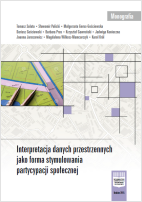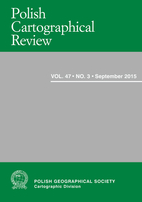
of landscape values of selected water reservoirs near Kraków
walorów krajobrazowych wybranych zbiorników wodnych okolic Krakowa
Slovak University of Agriculture in Nitra
Autorzy: Dawid Bedla, Karol Król
Introduction
A man is at the same time the creature and the creator of the environment. The environment provides him with physical existence and moral, social and spiritual growth [Jacniacki 1989]. Technical progress, the development of all scientific disciplines, technology, computerization and motorization are inevitably connected with exploitation of the environmental resources and degradation [Król, Gola 2005].
M. Castells [2000] described a modern society as a 'network society'. The Internet as a medium of sharing information plays a crucial part nowadays [Szymielewicz, Mazgal 2011]. A huge potential of the Internet was quickly discovered [Duckett 2008]. Spatial data access through the Internet websites was initiated in the mid 90's of the 20th century. Nowadays many GIS systems function in a distributed network Internet/intranet. The Internet and web applications make using of the GIS technology possible. They allow to reduce costs, provide a fast data transfer and significantly make information search easier. The preparation of specialized map websites, which gather spatial data, allowed their users access not only to this data, but also to geo-information services [Bartelme 2005, Gotlib and others 2007].
Information that is accessible on the Internet is attainable everywhere: from simple, twenty-four-hour news, through portals which offer a specific knowledge, to highly specialized databases, available to specialists. Maps (spatial mapping), i.e. eliciting information about given spatial elements, is the most popular way of using access to the information [Dziubiński 2012]. Web applications are a special kind of software. Their tasks are processed on the server and then delivered to the end user through the net — Internet or intranet. In order to run the application the user uses the browser, which can generate data from the server and display them. Currently the way applications used by people work is even more important than in the past. Previously people working with computers were mostly familiar with technology, today computers users' circle is much wider [Darie and others 2006].
There are more and more web applications which support environmental protection and development. They differ in a degree of usability understood as an access to different functionalities, which usually is the result of methods and techniques used to prepare them. An exemplary applications supporting environmental protection and development are the ones which give the user information on: gradient and inclination of slopes, vegetation, woodiness [Temiz, Tecim 2009], firmness of soil, precipitation, they are also the ones based on maps and models of water erosion in soils [Drzewiecki, Mularz 2001], hydrodynamics models (flood danger and risk) [Banasiak 2012, Helis, Górecki 2013] or allowing to make a decision about management and agricultural works. A different application can be a map website based on the map of wind strength, which makes deciding about localization of wind power plant easier. Another application supporting environmental protection and development can be a website that presents a noise map for a chosen region (an acoustic map), which is made based on measurements of the road, railway and tram or industrial noise. A different example of a web application is an interactive address system based on a road map of a given commune, which can be used to inform people about changes in streets names and buildings numbering. A flagship web applications are spatial plans published in the form of an interactive map websites and Geoportal (geoportal.gov.pl) — a central access point to spatial data [Brylski 2011].
(...)
Cytuj (APA): Bedla, D., Król, K. (2013). Web applications in protection of coastal vegetation and promotion of landscape values of selected water reservoirs near Kraków. Slovenská polnohospodárska univerzita v Nitra. Fakulta záhradníctva a krajinného ininierstva. Katedra krajinného plánovania a pozemkových úprav. Recenzovaný zborník. Jevícko, 2013, 120-131.
 |  |







